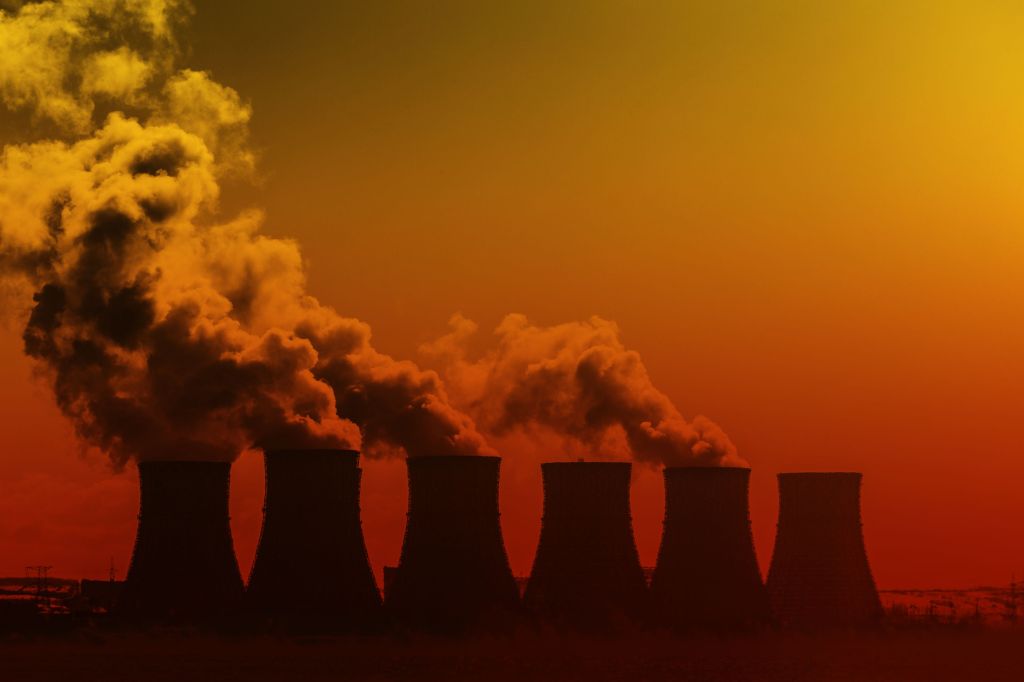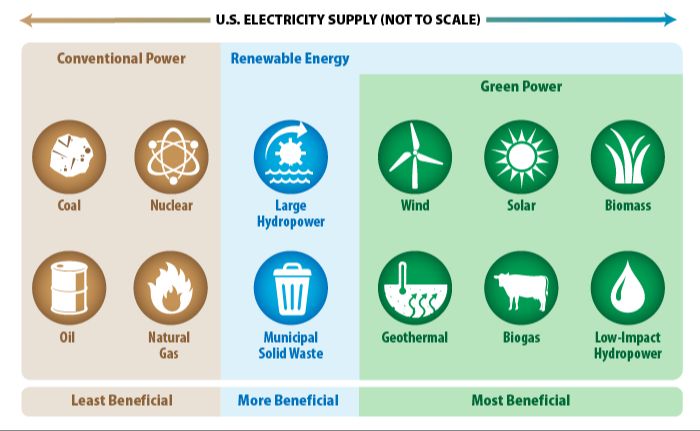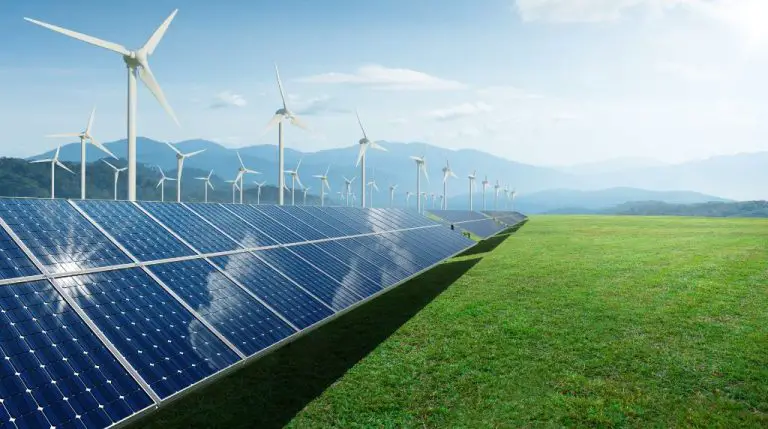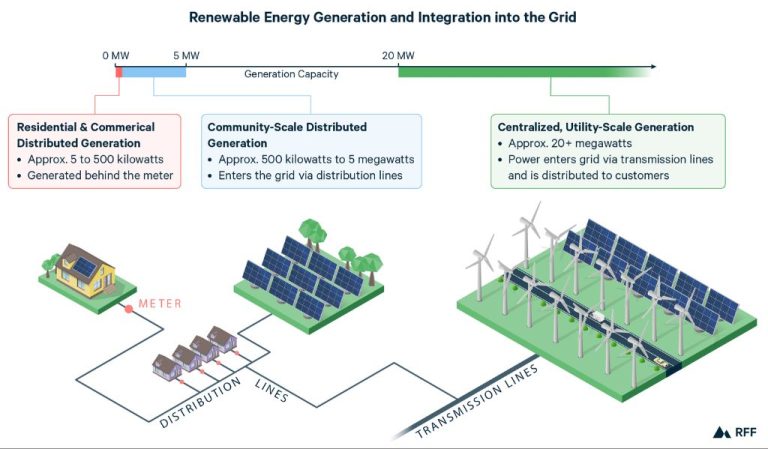Is Nuclear Safer Than Renewables?
Nuclear and renewable energy sources have emerged as major players in energy production around the world. Nuclear energy relies on the process of nuclear fission, where atoms are split to release energy, while renewable sources like solar, wind, and hydro harness naturally occurring flows of energy. Both offer the benefit of producing electricity without emitting greenhouse gases, but they also come with unique safety risks.
Nuclear power faces concerns around radiation exposure, accidents, and nuclear waste storage. Major incidents like Chernobyl and Fukushima have shown the potential dangers of radiation leaks. Renewable energy is generally considered safer, but facilities can cause injuries or environmental impacts. For example, roof-top solar panel installations can electrocute workers, large hydroelectric dams alter ecosystems, and wind turbines can cause bird deaths.
This article will provide an in-depth comparison of the safety records of nuclear and renewable energy. It will look at accident histories, radiation effects, carbon emissions, and other factors to weigh the risks and benefits of each energy option.
Nuclear Energy Basics
Nuclear power plants work by controlling nuclear fission reactions that produce heat. Inside the reactor core, nuclear fuel consisting of uranium pellets are assembled into fuel rods and submerged in water. The uranium atoms split apart when bombarded by neutrons, releasing energy in the form of heat and more neutrons. This sets off a continuous chain reaction known as nuclear fission. The heat from the fission reaction is used to boil water into steam that spins a turbine to generate electricity. Control rods absorb excess neutrons to regulate the fission rate and power output.
The most common types of nuclear reactors are pressurized water reactors (PWRs) and boiling water reactors (BWRs). PWRs keep water under high pressure so it doesn’t boil in the core, while BWRs allow the water to boil to produce steam. Other designs like CANDU and RBMK reactors use alternate coolants like heavy water and graphite. Most commercial reactors run on a once-through nuclear fuel cycle where the uranium fuel is used up in one pass before being stored as waste, but some use a breeder fuel cycle to produce more fissile material than they consume.
The nuclear fuel cycle refers to the multi-step process of mining uranium ore, refining it into nuclear fuel, using it in the reactor, and finally storing the spent fuel. Uranium is mined from underground or open pit mines, then milled and refined into uranium oxide. This is made into pellets that are loaded into fuel rods. After 3-4 years in the reactor, the spent fuel is cooled in pools before being transferred into dry casks for long-term storage. Reprocessing to extract plutonium for mixed oxide (MOX) fuel is sometimes done too.
Renewable Energy Basics
Renewable energy comes from natural sources that are continuously replenished, such as sunlight, wind, rain, tides, waves, and geothermal heat. The five primary renewable energy sources used most often are:
- Solar energy – Solar panels (photovoltaics) convert sunlight directly into electricity using the photoelectric effect. Concentrated solar power (CSP) uses mirrors to focus sunlight to drive traditional steam turbines or engines that create electricity.
- Wind energy – Wind turbines convert the aerodynamic power of the wind into rotational power to drive electric generators. Large utility-scale wind farms as well as small wind turbines can be installed.
- Hydropower – Flowing water from dams, waves, tides or ocean currents spins turbines to generate electricity. Hydroelectric dams provide most hydroelectricity today.
- Biomass energy – Organic plant and animal waste, such as wood, agricultural crops and residue, household trash and animal manure can be converted into electricity, fuels and heat through various processes.
- Geothermal energy – Naturally occurring heat from inside the earth is extracted to generate electricity in geothermal power plants, or provide direct heating and cooling in buildings.
These renewable resources do not get used up and can be replenished naturally over time. Generating electricity from these sources produces significantly fewer greenhouse gas emissions and air pollutants compared to fossil fuel sources. According to the U.S. Department of Energy, renewable energy accounted for about 12.2% of total U.S. energy consumption and about 17.5% of electricity generation in 2019.
Nuclear Safety Concerns
Nuclear power raises concerns about the potential risks of accidents and the safe disposal of radioactive waste. Some key concerns include:
Risk of Accidents
Nuclear reactors have complex safety systems to prevent the release of radioactivity. According to the World Nuclear Organization (Source), the risk of accidental meltdown at a nuclear power plant is very low due to various safety measures and multiple backups. The consequences of an accident are also minimal compared to other energy sources according to analyses. However, some experts worry about the potentially severe impacts of “black swan” events that could disable safety systems, as occurred at Fukushima (Source).
Radioactive Waste Disposal
The nuclear fission process generates radioactive waste. This waste needs to be isolated from humans and the environment for long periods. Technologies exist to properly contain radioactive waste (such as geologic storage), but there are disputes about the risk of future leakage. Some experts argue that we still lack a permanent solution for dealing with the most toxic waste (Source).
Nuclear Proliferation
The spread and use of nuclear technology for weapons remains an ongoing global concern. Some argue that expansion of nuclear energy could increase proliferation risks by providing greater access to materials and expertise that could be misused to develop nuclear weapons (Source).
Renewable Safety Concerns
The renewable energy industry does present some safety risks that need to be properly managed. During construction and operation, there are hazards related to working at heights, electrical safety, machinery operation, and fire risks (Source 1). For example, solar panels are often installed on rooftops, requiring fall protection and training for working at heights. There are also electrical hazards from solar wiring and equipment that can cause shocks or burns if not properly isolated. Wind turbines also require climbing and working at heights to access equipment.
Proper training, safety procedures, and equipment like harnesses and insulated tools can mitigate these risks. Additionally, maintenance procedures and equipment inspections are important for identifying any potential hazards with renewable systems. Safety managers play a key role in developing comprehensive safety plans for renewable energy projects (Source 2).
In terms of waste, solar panels and wind turbine blades are difficult to recycle or dispose of. They contain hazardous materials that could leach into soil and water if not properly contained in landfills. More recycling options and procedures need to be developed to manage renewable energy waste and prevent environmental contamination.
Nuclear Accident History
There have been three major nuclear accidents in the history of civil nuclear power – Three Mile Island, Chernobyl and Fukushima. The Three Mile Island accident in 1979 was a partial meltdown of the reactor core with no deaths or injuries to plant workers or the nearby community. The Chernobyl disaster in 1986 was the result of a flawed Soviet-era reactor design and human error. It caused widespread radioactive contamination and acute radiation sickness among first responders. Estimates of long-term deaths from radiation exposure vary greatly. The Fukushima Daiichi nuclear disaster in 2011 was caused by a tsunami that resulted in three nuclear meltdowns, hydrogen explosions and the release of radioactive contamination. There were no direct deaths from radiation exposure but over 100,000 people were evacuated from the area.
The nuclear industry has implemented many safety improvements and reforms after these major accidents, including better training, additional backup systems, new safety standards and closer regulatory oversight. Modern reactor designs have enhanced safety features and are designed to automatically shut down in the event of emergencies. According to the World Nuclear Association, the impacts of even major nuclear accidents have been far less severe than widely feared.
Renewable Accident History
The safety record of renewable energy sources like solar and wind is generally quite positive with very few major accidents when compared to other energy sources. According to Our World in Data, the death rate from solar power accidents is estimated at 0.44 deaths per terawatt-hour (TWh), while for wind power it is 0.15 deaths per TWh. These rates are significantly lower than those for fossil fuels.
One of the most serious solar power accidents occurred in 2013 at the Ivanpah Solar Electric Generating System in California. Three workers were injured when a misaligned conduit pipe released hot steam, molten salts, and hot water. There have also been some fatal accidents involving workers falling from heights during wind turbine maintenance and construction.
Overall, renewable energy sources like solar and wind have demonstrated a strong safety record with employee accident rates comparable or lower than other industries. Proper worker training, fall protection, and following safety protocols during operations and maintenance are important for maintaining this record.
Radiation Effects
Radiation exposure from nuclear power plants during normal operation is very low. According to the Nuclear Regulatory Commission, if you lived within 50 miles of a nuclear power plant, you would receive an average radiation dose of about 0.01 millirem per year, which is a negligible amount. However, accidents at nuclear plants can release higher levels of radiation that may increase health risks.

According to the National Cancer Institute, exposure to high doses of ionizing radiation, such as after a major nuclear accident, increases the risk of health effects like cancer, cardiovascular disease, and cataracts. The effects depend on the radiation dose, rate of exposure, and the part of the body exposed. Acute radiation syndrome from very high doses can cause illness or death within weeks or months.
Overall, radiation risks from nuclear power need to be carefully managed through safety systems and procedures. Major accidents are rare, but can have severe health consequences in surrounding areas. Normal operations pose minor risks to public health that are far lower than many other electricity sources.
Carbon Emissions
When it comes to carbon emissions, nuclear power compares favorably to renewable energy sources. According to the World Nuclear Association, nuclear power plants produce no greenhouse gas emissions during operation, and over the course of its lifecycle, nuclear produces about the same amount of CO2-equivalent emissions per unit of electricity as wind power (source: https://world-nuclear.org/nuclear-essentials/how-can-nuclear-combat-climate-change.aspx).
Looking at lifecycle emissions, which include construction, fuel production, and decommissioning, nuclear clocks in at about 15 grams CO2/kWh. This is comparable to wind (12 g), hydropower (24 g), and far below natural gas (500 g) and coal (1,000 g). So from a carbon perspective, nuclear is on par with renewables and superior to fossil fuels (source: https://changeoracle.com/2022/07/20/nuclear-power-versus-renewable-energy/).
Nuclear energy is low-carbon, with some experts even arguing it should be classified as a renewable energy source. While the fuel itself is not renewable, the emissions profile of nuclear can help significantly reduce greenhouse gas emissions (source: https://www.orano.group/en/unpacking-nuclear/is-nuclear-power-a-renewable-energy).
Conclusion
In summary, both nuclear energy and renewables have risks that must be weighed when considering safety. Nuclear power poses risks such as radiation exposure from accidents or improper waste storage, as well as proliferation of nuclear materials. Renewables like wind and solar have lower accident risks overall, but are not without hazards from manufacturing, construction, maintenance, and disposal.
Based on the historical safety records, modern nuclear reactors seem to be safer per unit energy produced than early generation plants. Renewables also continue to improve their safety as technology advances. Ultimately, the evidence suggests nuclear has a strong safety profile compared to other mainstream energy sources if properly managed. But ideal scenarios likely combine nuclear, renewables, and perhaps natural gas or storage solutions to create a low carbon energy system with minimal health and accident risks.





